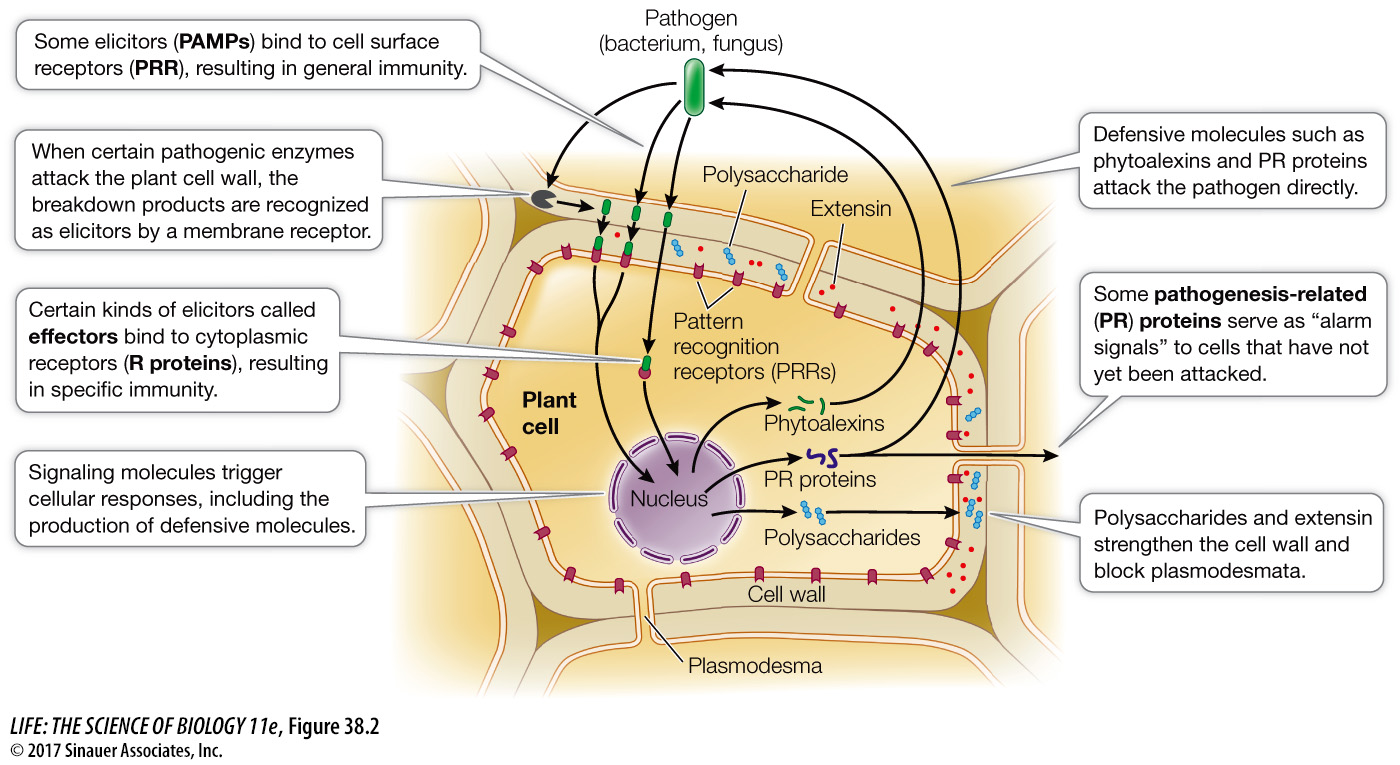Physical barriers form constitutive defenses
A plant’s first line of defense is its outer surfaces, which can prevent the entry of pathogens. As Chapter 33 described, the organs of a growing plant that are exposed to the outside environment are largely covered with cutin, suberin, and waxes. These substances not only prevent water loss by evaporation but can also prevent fungal spores and bacteria from entering the underlying tissues. Some fungi get around this defense by secreting enzymes that hydrolyze these substances, breaking them down to gain entry.
Much more important to the plant are the induced resistance mechanisms. Refer to these in Focus: Key Figure 38.2 as you read the sections that follow.
focus: key figure

Q: Would you expect these defense molecules to be expressed in the cells of roots, leaves, or both?
Both plant organs are exposed to all types of pathogens, although their identities may be different. So both root and leaf cells exposed to the environment would express the defense molecules.
Animation 38.1 Signaling between Plants and Pathogens